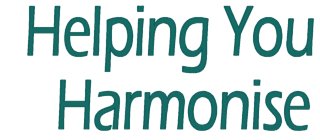Add a comment
On Finding the Layers in Our Music: Part 2
‹-- PreviousNext --›Having explored in my last post the question of what it means to develop our interpretation of a piece of music, it is time to turn our attention to what we actually do to make this happen. Using the distinction between ‘interpretation’ as meaning our imaginative understanding of a piece, and as meaning our concrete performance actions to make it audible, I am going to divide this up into to categories: things we do with our brains and things we do with our bodies. Of course, the two are only ever notionally separable, but when you’re thinking about something that keeps throwing up more tangents you need some kind of organising principle to hold the ideas together.
I’m also focusing on activities that can work either as individual study or as group activities. The relationship between a conductor’s understanding of a piece and the overall insight in performance is a whole other interesting set of questions that I am not going to get into today.
Brain Work (aka analysis and contextual research)
- Find the moments. Where are the bits that will make the audience go ‘ooh!’? I like to do this as a discussion exercise with groups of 3-4 people, each group including people from a mix of parts, so that they can bring details to each other’s attention
- Analyse the lyrics as a drama. Where and when does it take place? (How do we know?) What is at stake? Where are the turning points in the narrative?
- Analyse the lyrics as a poem. Where are the patterns of rhyme and internal rhyme? Where are the assonances and alliterations? This is nice to do actually via the body, exploring the pattern of mouthfeel of the words.
- Explore the melody without its lyrics. How would you shape it if you were to play it on a clarinet or a violin? How does this shaping relate to the previous exercises?
- How would you orchestrate this? Is the melody actually more suited to clarinet or violin? Does the bass line belong on a bowed or plucked double bass, or is it a tuba? Are the harmonies shimmering strings or a punchy horn section?
- Which are the particularly striking chords? If this chord were a foodstuff, what flavour would it be?
- Research the background to the music. When and why was it written? What contexts has it been used in since? What did it mean to its original audiences, and is that meaning different from what it might mean today? What pieces of music might its creators have been responding to when they wrote it?
Body Work (aka technical skills)
- Use gesture to concretise groove. The typical barbershop experience here is the backbeat click. You can immediately hear if it is together, and if it’s not you can usually see that that’s because different people are feeling the shape of the pulse differently. Physical motion can help you develop a consensus general pattern, and then, once you are responding more readily to each other, to introduce subtle nuances to shape the musical narrative.
- Sing to a bubble. This simultaneously focuses your collective attention onto the musical shape and helps develop the connection between breath and voice to deliver a legato line that makes that shape manifest. As well as all the usual useful resonant things it does of course. And as I noted some years ago it also vouchsafes useful information about the relationship between the body and brain dimensions of line.
- Sing without consonants. As well as the vocal benefits listed in the linked post it interacts nicely with the poetic analysis your brain was working on above.
The third piece of the puzzle, that integrates the conceptual and the technical is perception. Underlying both our capacity for technical control and our imaginative resources is the capacity to discern the differences between ordinary and more refined or vivid performances. The more detail we can hear, the more we will be able to control our own performative actions.
Perception Work
- Duetting. Well, you knew I was going to say that eventually didn’t you? I always do because it’s the exercise that keeps giving, and especially as a means to develop our capacity to hear and recognise nuance.
- Deep dive into individual chords. Give yourself time to listen in depth and get used to how those particular notes live together, and how they feel when they gel.
- Listen to other performances. Both of the version you are learning and of other arrangements. Are there standard ways of approaching it or is it subject to regular reimagining? How do different performance choices change its impact or meaning?
Okay, so now this post is getting long too. And these are just ‘for examples’ - there’s no way to be exhaustive with these kind of lists. So there’ll be one more post to come which will attempt to draw some deeper principles for how to approach the task. I’m a bit daunted by whether I’ll be able to come to much by way of useful conclusions, but we’ll give it a go and see.










